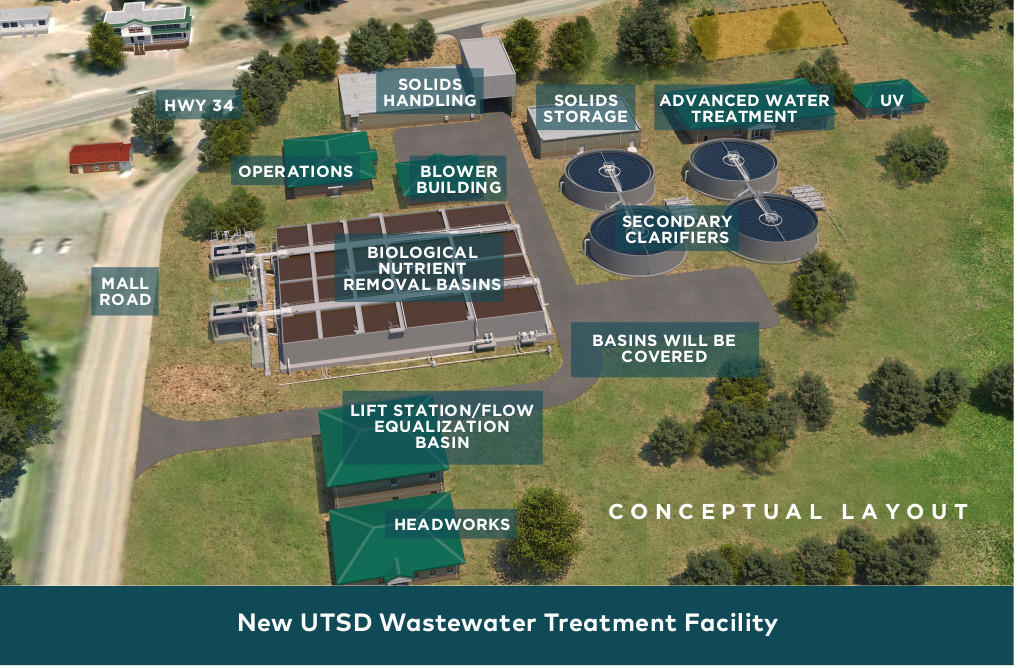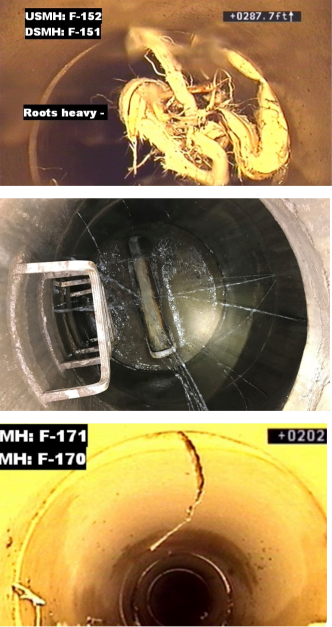Treatment
This is Home. We treat it right.
We take great care and pride in ensuring the health of our home. This means making our facilities as efficient and green as possible. It means eliminating the impact on our environment. It means taking the responsibility of caring for the headwaters seriously. It means ensuring our quality of life. And it means delivering this in the most cost-effective way possible.
So while you may not think much about what happens when you flush the toilet, we obsess about it. And we want to make sure we treat it right.

The Challenge
Today, our District faces the challenge of an aging treatment facility approaching a 50-year service life and an inability to achieve higher water quality regulations mandated in the next few years by the Environmental Protection Agency and Colorado Department of Public Health and Environment Water Quality Control Division. Although we have maintained District resources in excellent condition, the Upper Thompson Sanitation District Water Treatment Facility (WTF) was constructed in the mid-The 1970s. The facility is difficult to maintain, nearing capacity, and not equipped to meet future water quality regulations. Additionally, the existing facilities do not meet current electrical, building code, and safety requirements.
Building a Clean Future
To meet these challenges, we are relocating and expanding our facilities to a new site near the current WWTF. When completed, the new UTSD WWTF will ensure compliance with future regulatory requirements, accommodate future growth, and protect the water quality of the Big Thompson River. This new facility will incorporate state-of-the-art treatment technologies, materials, and equipment utilizing biological nutrient removal, removal of heavy metals and solids digestion and handling processes, and meet current building codes. Once completed, the project will provide additional space for build-out treatment capacity for the entire Estes Valley.
Currently, we are processing 840,000 gallons of water each day with a service area of 44 square miles and a collection system length of 96 miles. The new facility will allow us to process up to 3,000,000 gallons/day which is important to keeping up with the demands of our growing community and economy as the usage fluctuates greatly in the summer peak season.

Cost of the Project
Final costs have yet to be determined, however preliminary estimates range between $48-60 million depending on the final process selection and the final decision of the sewer interceptor alignment.
Funding the Water Treatment Facility
This project is expected to be financed through long-term, low-interest loans from the Colorado Water and Power Development Authority’s State Revolving Fund, and/or the United States Department of Agriculture in addition to District capital reserves of $10 million and rate increases. The District will also investigate state and federal grant opportunities for design and construction.
Rate Increases
The UTSD sewer rate increase has been assessed at 11% each year over the next three years; 2021-2023, and diminishing increases for subsequent years. In 2021 this translates into an extra $5.33/month for most customers in the District. This fee will vary from customer to customer assessed as a flat rate fee or calculated on metered water use. These rates are subject to annual evaluation and possible reduction based on total project cost, grants obtained, and loan interest rates at the time of final completion.
Construction Details
Construction is anticipated between April 2022 and June 2024. The new facility will include the following operations:
Headworks Building
The headworks building contains equipment and processes designed to remove large amounts of inorganic debris including rags, sand, and rocks (grit), and fats, oils, and grease (FOG).
Lift Stations/Flow Equalization Basin
Sewage flow is pumped through two lift stations then into a flow equalization basin to allow proportional flow rates into the WWTF, leveling out the high peak flow periods of the day.
BNR Basins
Large amounts of harmful nitrogen and phosphorus – in the water treatment plant discharge can eventually cause eutrophication (nutrient enrichment due to human activities) in surface waters. Excessive eutrophication can cause algae blooms in the summer, low dissolved oxygen levels, fish kills, murky water, and depletion of desirable flora and fauna.
Biological Nutrient Removal (BNR) is a treatment process used for nitrogen and phosphorus removal from wastewater before being discharged into the receiving stream. The biological nutrient removal (BNR) process depends on the proliferation and type of microorganisms capable of removing nitrogen and phosphorus from the waste stream. Most BNR treatment trains include aerobic (with oxygen) basins preceded by anaerobic (without oxygen) basins, mixing, and solids removal.
Secondary Clarifiers
Secondary Clarifiers are large round settling tanks and the principal mechanisms for continuous separation of the biological floc from the treated liquid waste stream. A a portion of the removed solids are returned to the treatment population, while some solids are permanently wasted from the system.
Advanced Water Treatment
The advanced water treatment process can include enhanced phosphorus removal polishing, and cloth filtration units or sand filtration to remove residual suspended solids.
Operations Building
The Operations building will include administrative offices and a full-scale laboratory, capable of testing, analyzing, and reporting the District’s permitted discharge parameters.
Solids Handling and Solids Storage
Solids removed from the system receive further treatment, using aeration, chemical addition, and dewatering, resulting in the destruction/digestion of organic compounds. Once stabilized, the biosolids are hauled offsite to either a landfill or land application used to enrich nutrient-deficient soil.
Ultraviolet Disinfection (UV)
Final disinfection of wastewater effluent is accomplished by Ultraviolet Radiation (UV). Ultraviolet light penetrates the microorganism cell wall and destroys the cell's ability to reproduce. The main components of a UV disinfection system include lamps, ballasts, and a reactor.

Top: Roots penetrating a sewer main line.
Middle: Cracks in a manhole allowing infiltration of groundwater into the collection system
Bottom: Cracked sewer main line allowing infiltration of groundwater

